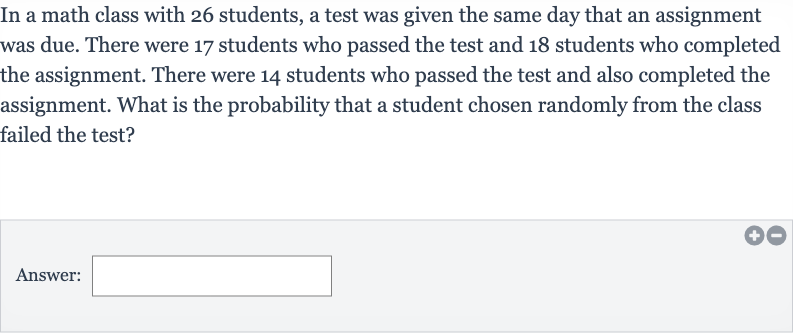AI tutor
Welcome to Bytelearn!
Let’s check out your problem:

In a math class with students, a test was given the same day that an assignment was due. There were students who passed the test and students who completed the assignment. There were students who passed the test and also completed the assignment. What is the probability that a student chosen randomly from the class failed the test?Answer:
Full solution
Q. In a math class with students, a test was given the same day that an assignment was due. There were students who passed the test and students who completed the assignment. There were students who passed the test and also completed the assignment. What is the probability that a student chosen randomly from the class failed the test?Answer:
- Denote Events: Let's denote the events as follows:: The student passed the test.: The student completed the assignment.We are given the following information:Total number of students in the class = Number of students who passed the test () = Number of students who completed the assignment () = Number of students who passed the test and completed the assignment ( and ) = We need to find the probability that a student failed the test, which is the complement of the event (passing the test). The probability of an event's complement is minus the probability of the event itself.
- Calculate Probability Passed Test: First, we calculate the probability that a student passed the test, which is the number of students who passed the test divided by the total number of students.
- Calculate Probability Failed Test: Now, we calculate the probability that a student failed the test, which is minus the probability of passing the test.
- Subtract to Find Probability Failed Test: We perform the subtraction to find the probability that a student failed the test.
More problems from Find probabilities using the addition rule
QuestionGet tutor help
QuestionGet tutor help
QuestionGet tutor help
QuestionGet tutor help
QuestionGet tutor help
QuestionGet tutor help
QuestionGet tutor help
QuestionGet tutor help
QuestionGet tutor help
